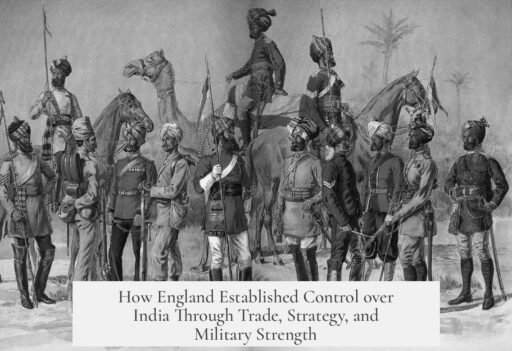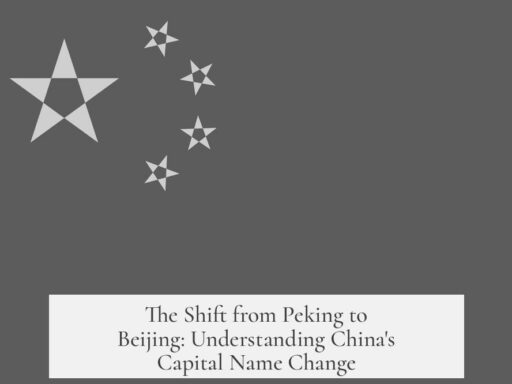England took over India through a gradual process combining trade dominance, military power, political manipulation, and exploitation of internal divisions and empire decline. The English East India Company (EIC) started as a commercial enterprise in the early 1600s, engaging in trade amid competition with Dutch, French, and Portuguese rivals. By 1765, the British had eliminated most European competition in India, with the Dutch focusing elsewhere and the Portuguese reduced to religious missions. The French, weakened by their involvement in the American Revolution, were defeated by British forces in India, leaving Britain in a dominant position.
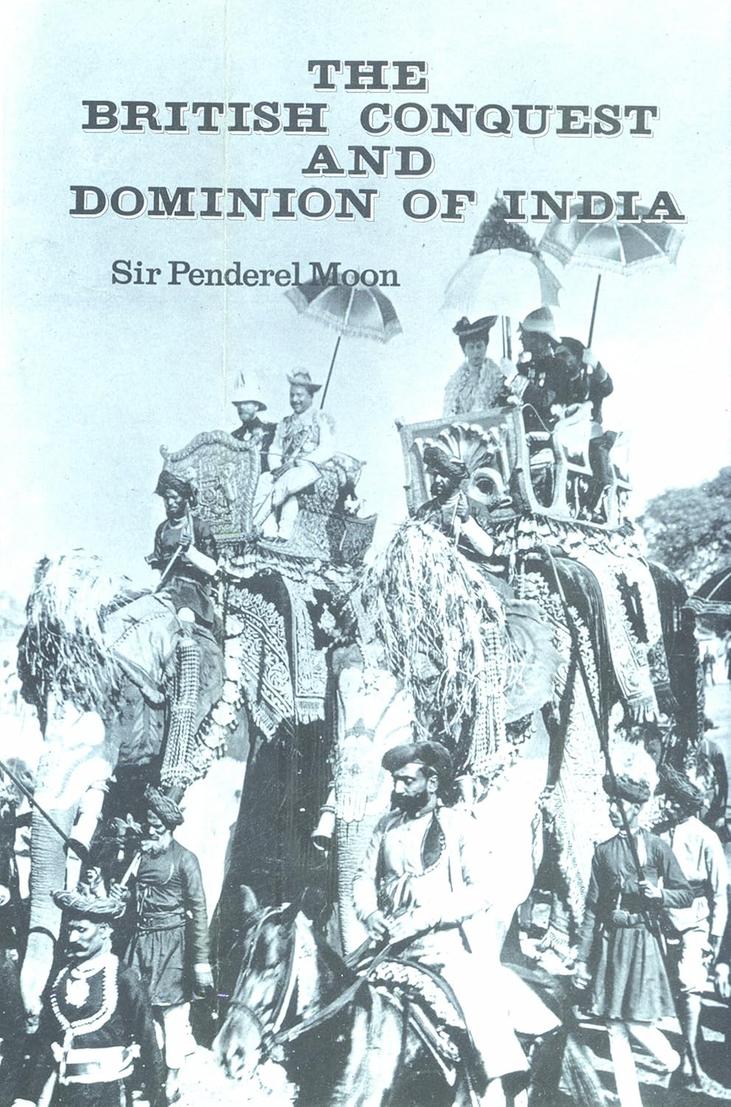
Consolidation began in Bengal, after the British secured tax concessions. Through corruption and ruthlessness, they defeated the Nawab of Bengal, then imposed heavy taxes on the local population, cutting out traditional exporters from benefits. Bengal became the British power base with significant revenues. Over the next century, Britain expanded control by turning Indian princes and provinces against each other and bringing large portions of India under their influence, though some princely states retained nominal independence under British suzerainty.
The British applied a strategic “divide and conquer” approach. They exploited rivalries among royal families, encouraging local rulers to ally with the British in exchange for military support during conflicts with neighbors. Aligning with some royal factions increased their power, while punishing those who refused through military means. This avoided large-scale direct invasions by relying on local rulers to maintain order once allied, essential in a region fragmented into various cultures and nations. The British needed only enough strength to tip local balances.
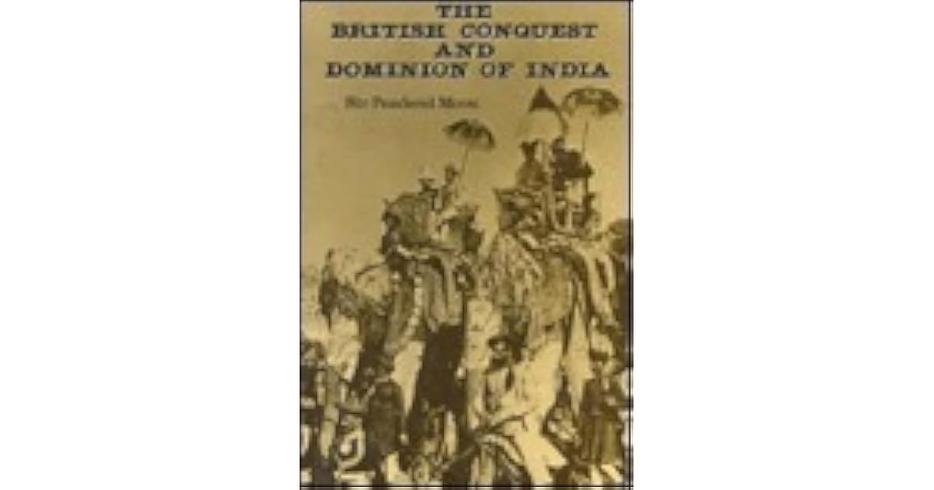
The decline and collapse of the Mughal Empire created a vast power vacuum. The Mughals had once ruled large parts of India but had become fragmented and weak. British forces had previously fought and lost to the Mughals but gradually adapted their approach by cooperating with Mughal leaders, abiding by their laws as they expanded influence. When the Mughal Empire fell, competing regional powers lost a central authority, enabling Britain to absorb territories by presenting itself as a stabilizing force. The people in these former Mughal regions often accepted British rule to restore some order.
Indian support and fragmented resistance also eased British expansion. The EIC secured loyalty from many Indians beyond just payments or military strength. Many locals did not see British rule as significantly different from rule by other Indian or regional powers, such as the Marathas. Nationalist sentiment for a unified Indian identity did not strongly oppose foreign domination until much later, limiting the effectiveness of resistance efforts. Even major uprisings like the 1857 Sepoy Mutiny lacked widespread support and were suppressed by forces including other Indian troops.
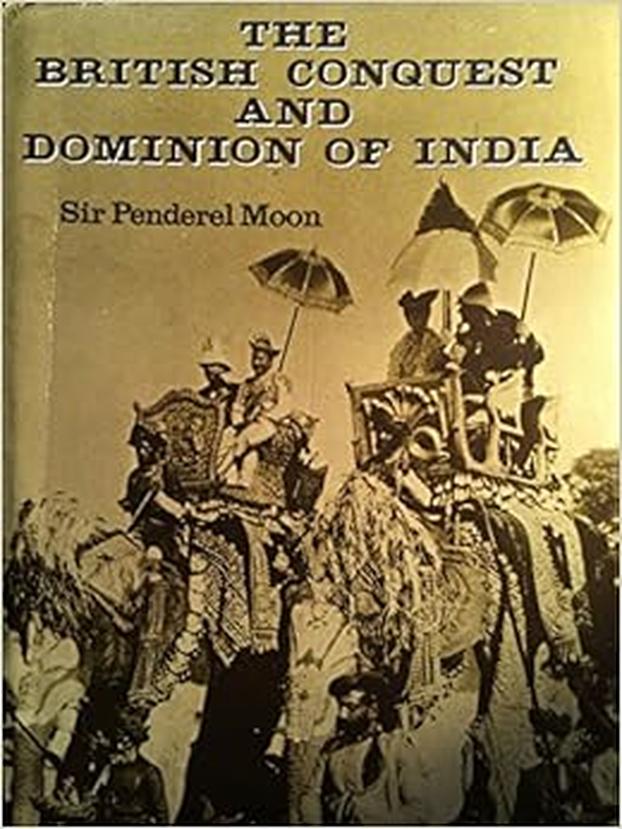
Technological and military factors favored the British. Indian armies largely used outdated weapons like matchlocks and traditional melee troops, while British forces deployed modern flintlock muskets and disciplined European-style infantry formations. Britain’s smaller but advancing economy and industrial edge allowed it to maintain a well-equipped fighting force. India’s agrarian-based economy and larger population were less able to support such military modernization.
Finally, the British expanded opportunistically. Their global maritime reach and industrializing economy enabled rapid response to power vacuums and collapse of native empires, not limited only to India. This global strategic position, combined with military and political tactics tailored to fragmented regional conditions, made British control gradually inevitable.
| Key Factors in England’s Takeover of India |
|---|
| Initial trade dominance and elimination of European rivals |
| Control and economic exploitation of Bengal |
| Divide and conquer tactics exploiting Indian political rivalries |
| Exploitation of Mughal decline and subsequent power vacuum |
| Securing local support and lack of unified Indian resistance |
| Technological and military advantages |
| Opportunistic global expansion under industrializing British Empire |
- The English East India Company started as a trading entity and transitioned to territorial control by 1765.
- British military superiority and alliances with Indian rulers helped consolidate power with minimal direct invasions.
- The collapse of the Mughal Empire created conditions favorable for British dominance.
- Indian regional divisions and absent strong nationalist sentiment delayed unified resistance.
- Technological advancements sustained British military success over traditional Indian forces.
How Did England Take Over India? A Story of Trade, Strategy, and Opportunism
England took over India primarily through a mix of shrewd trade tactics, strategic military actions, and savvy political maneuvers. It’s not a tale of overwhelming conquest alone but a layered saga involving alliances, division, and exploiting weaknesses in long-standing empires.
Let’s unravel this complex historical tapestry, step by step.
A Shoreline Marketplace: Early British Presence and Trade Wars
The English did not arrive in India waving flags of conquest in the early 1600s. No, they came with ships full of goods and hopes to trade. The English East India Company (EIC), a profit-hungry enterprise, quickly made huge profits between 1600 and 1765. Yet Britain wasn’t the only player; the Dutch, French, and Portuguese were vying for their slice of India’s riches.
Imagine a crowded bazaar where traders squabble over stalls. That’s how intense the competition was, with the British striving to protect their monopoly. By the time 1765 rolls around, the Dutch shift focus to Indonesia, the Portuguese scale down to spreading Christianity, and the French, depleted after losing support in the American independence war, lose ground in India too.
Both the French and British allied themselves with Indian princes, dragging European rivalries into India’s own political web. The British, however, mastered this entanglement better and cemented their dominance by aligning with powerful local rulers.
Securing the Prize: The British Take Bengal
Bengal emerges as the British crown jewel. The British East India Company used cunning—and corruption—to outmaneuver the Nawab of Bengal. Through tax concessions, they gained control over revenue collection and started charging locals for taxes and exports without paying the original ruler. This brought massive income, essentially turning Bengal into a British cash machine.
With Bengal as a stronghold, the British had a launching pad. From here, they played Indian princes against one another for the next hundred years, spanning 1765 to 1857. Almost the entire subcontinent came under British influence or direct control, while some princely states retained nominal independence but lived under British sway.
Mastering the Mind Game: Divide and Conquer
One of Britain’s smartest moves was its divide and conquer approach. India wasn’t one nation but a patchwork of kingdoms and cultures. Instead of fighting the whole subcontinent outright, the British played rulers against each other.
Picture this: If Royal A wants to invade Royal B’s territory, British support in exchange for allegiance could tip the scales. If Royal A refuses, Royal B might accept British protection and crush Royal A. It’s a classic chess game where the British move second and always gain.
This tactic saved the British from costly direct invasions. Once rulers pledged allegiance, they maintained local peace themselves, reducing British administrative burdens. Clever, isn’t it?
The Mughal Empire: From Power to Vacuum
The Mughal Empire, India’s ancient powerhouse, was crumbling by the 18th century. The British saw this fragmentation as an opportunity and exploited the decline perfectly.
Though the British lost their first skirmish against Mughals, they learned quickly and operated respectfully within Mughal rules for decades. But once the empire collapsed, a power vacuum appeared. Suddenly, regional powers scrambled for control, and the British swooped in with promises: military help, protection from European rivals like the Dutch, and lucrative trade deals.
Many Indian rulers, desperate to maintain power, accepted British terms. What began as a trade partnership evolved into client states, protectorates, and finally British provinces.
Who Supported the British? The Indian Factor
Surprisingly, the British did not conquer through brute force alone. They earned local loyalty, sometimes beyond financial subsidies or military might. The East India Company’s armies consisted mostly of Indian soldiers trained on European lines. Their rivals did the same.
This begs the question: Why did many Indians support British rule or at least tolerate it? The answer lies partly in the absence of a unified Indian identity. For example, Bengalis might not have favored rule by Marathas from West India any more than by the British, whom they had known longer.
Even the famous Sepoy Mutiny of 1857 lacked widespread support. Many Indian soldiers actually helped the British quell the uprising. The nationalist movement with broad Indian resistance only took shape in the 20th century.
The Edge: Military and Technological Advantages
One clear factor in British success was technology—primarily in weaponry and military organization. At the pivotal Battle of Plassey in 1757, Indian forces mainly used outdated matchlocks and large formations of swordsmen and spearmen.
The British troops, by contrast, wielded precision muskets like the Brown Bess flintlock, used disciplined firing lines, and had better training. Additionally, Britain’s industrial economy enabled them to sustain a technologically advanced military, even with a smaller population compared to India’s vast agrarian societies.
Opportunity Knocks: European Global Reach
The British weren’t just lucky in India but fortunate in global timing. European trade empires thrived on expansion opportunism. When native empires like the Mughals collapsed, British and other European powers swooped to fill the gaps.
This wasn’t unique to India, but British global networks gave them unmatched leverage. Their industrial economy, combined with superior naval and military power, underpinned this expansion. So Britain’s takeover of India was not a sudden Blitzkrieg but a slow, strategic seizing of chances over centuries.
Lessons and Reflections
How did England take over India? Not by sheer force alone. It’s a story of trade dominance, exploiting local rivalries, adapting to political chaos, and technological edge.
Here’s a quirky thought: The British might have come as traders but ended up as rulers, mostly by *making friends* with local powers—funny how trade deals turned into political wagers.
This history has valuable lessons today—how economic influence can morph into political control, especially when local divisions exist. It reminds us that unity matters in resisting external domination.
Quick Recap in a Nutshell
- British start trading in 1600s, compete fiercely with Dutch, French, Portuguese.
- By 1765, eliminate most European rivals; French left weakened after American independence war.
- Gain tax concessions and destroy Nawab of Bengal through corruption and military moves.
- Use divide and conquer: Pit Indian princes against each other, gaining allegiance and control without full invasion.
- Exploit the collapse of Mughal Empire to expand rapidly.
- Win local loyalty as much as by force; Indian resistance divided or minimal initially.
- Military tech and training superior at key battles like Plassey.
- Global reach and opportunism underpinned quick expansion after native powers weakened.
So the British takeover was a slow-burning recipe of strategic alliances, economic control, military technology, and clever diplomacy—definitely not an overnight success story.
Want to dive deeper into how this Empire shaped world history or how India’s struggle for independence later unfolded? Keep exploring—history has a lot more stories to tell!
